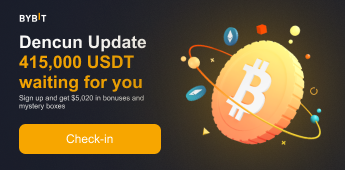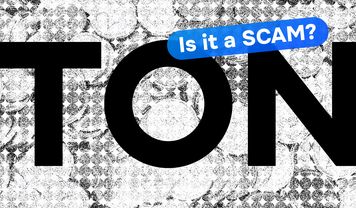
Top Layer-2 Projects in 2024
The blockchain has come a long way in its relatively short history and has undergone many changes and additions. One such addition has been Layer-2 protocols. They are designed to improve the underlying network. In this article, we will look at the most intriguing ones for 2024.
What are Layer-2 projects, and why do we need them?
Layer-2 solutions have become an indispensable part of the crypto industry, as they were designed to improve the performance of various blockchain networks. They run on top of the underlying network (e.g. Ethereum), significantly reducing congestion, lowering transaction costs and increasing throughput. Imagine a traffic controller on a busy highway: that's the L2 solution. It takes transactions outside the main blockchain and runs them separately.

Attention to L2 solutions continues to grow, despite the fact that in March the Ethereum network went through a major upgrade to improve scalability. It would seem that additional solutions are no longer needed. However, L2 solutions shone brighter than usual. At the time of writing, the total TVL of Layer-2 solutions amounted to $44.68 billion. Yes, and Ethereum, although the dominant platform for launching Layer-2 solutions, is not the only one.
In addition to improving scalability and performance and reducing fees, L2 solutions can support applications ranging from gaming and DEX to financial services and NFTs. And some can also offer additional security and privacy. In general, Layer-2 solutions perform different functions depending on the blockchain they run on.
Below, we have provided a list of the best Layer-2 projects and solutions for 2024. We do not endorse it, but only inform which Layer-2 projects seem most interesting to us at the moment.
Disclaimer: This article is for informational purposes only. We do not encourage you to invest in any particular project. All decisions are left to you. Remember the importance of DYOR.
Top L2 Projects and Solutions in 2024
Optimism
Optimism has quickly become a strong competitor to L2 solutions thanks to its transaction throughput boosting technology. It has a peak throughput of 4,000 TPS, which allows transactions to be processed 26 times faster than the Ethereum core network. At the same time, the network maintains security and reliability.
The Optimism community is optimistic about the future of the network, aiming to decentralize it. It is already creating various projects within the ecosystem. Optimism also offers a developer-friendly environment with user-friendly tools.
The native OP token is used for transaction fees, staking, and network management. After the Dencun update, the developers announced airdrop for creators and artists, which has only revitalized interest and activity in the ecosystem.
Base
This L2 solution was launched in mid-2023 by Coinbase exchange. Base has attracted attention by utilizing the latest blockchain technologies. This solution aims to provide fast transaction processing while maintaining Ethereum's scalability and low costs. The Dencun upgrade was supposed to bring these costs down to 1 cent.
Base uses a combination of Optimistic Rollups and zk-Rollups, something that got developers interested. It is a very hybrid model that has played a key role in lowering transaction fees.
Since its inception, Base has experienced significant growth in TVL to $6.35 billion, reflecting its growing popularity and trust in the crypto community. Base's recent popularity has been driven by the launch of memecoins. The network has become the second preferred platform for memecoin launches after Solana. More than 333,000+ memecoins have been launched on the network since the beginning of April alone.
Arbitrum
Arbitrum uses a unique Optimistic Rollup technology. Compatibility with existing Ethereum infrastructure allows developers to easily port their applications. This year, the team released Arbitrum Stylus. This new programming ecosystem has empowered developers. That has helped Arbitrum secure its position as the preferred platform for launching dApps.
In addition, the team announced the launch of BOLD (Bounded Liquidity Delay) protocol aimed at increasing network decentralization. Arbitrum's latest updates have also generated interest from the community.
The native token, ARB, has many uses. For example, transaction payment, staking and management.
zkSync
This is another solution for scaling the Ethereum network. Unlike Optimism, Arbitrum and Base, this network uses a different technology: Zero-Knowledge Proofs. It ensures privacy and security of user transactions. zkSync is powered by zkRollups, which makes it particularly effective in terms of privacy and security.
Privacy is a key advantage of zkSync. In addition to this, the network keeps in mind high efficiency and low transaction fees.
zkSync has received even more attention due to its potential airdrop. The other day, the team hinted at the release of a management token and a possible airdrop by the end of June. The team is ready to hand over the management of zkSync to the community, and the upcoming v24 update should be the final one before this event.
Immutable X
What sets Immutable X apart from all the aforementioned L2 solutions is that this network is designed for gaming. Improved scalability, security, and availability make the experience of Web3 gamers and developers better, according to the team. The network also, like zkSync, uses zkRollups to provide cheap but instant transactions.
Throughout its existence, Immutable X has grown into a large ecosystem of games, NFT and DEX and dApps. And the native token, IMX, is used for transaction payment, staking and management.
StarkNet
StarkNet, like many of the solutions on this list, runs on zkRollups technology to reduce gas fees and congestion. However, what makes StarkNet special is its own technology called STARK. It verifies transactions without revealing any basic user data. In other words, StarkNet cares about your privacy and security.
StarkNet allows developers to create efficiently scalable dApps, while retaining all the charms of Ethereum.
Attention to StarkNet increased when developers drastically reduced gas fees and increased bandwidth to make their solution more affordable. In addition, an ecosystem of innovative dApps including DeFi, NFT, games and more is currently being developed on StarkNet.
Stacks
Stacks is Bitcoin's semi-autonomous sidechain. It also runs on its own consensus algorithm, Proof of Transfer (PoX). The algorithm, in turn, is a hybrid of two others, Proof of Stake and Proof of Burn. In other words, it combines miners on the Bitcoin blockchain and stakers on the Stacks network. This L2 Bitcoin solution has been loved by many for this feature.
Stackers and miners work cooperatively. The former send STX tokens to stakers, while the latter pay them to get the right to confirm a block in the Stacks network. The chosen miner not only confirms the block but also gets rewarded with STX.
The Stacks network is also capable of supporting various dApps, which is not possible in the mainstream Bitcoin network. And a recent update, Nakamoto, allowed the Stacks network to write data directly to the Bitcoin blockchain.
Lightning Network
This is another popular L2 solution for Bitcoin. It is a network of payment channels between users. A new channel is created for each transaction. Lightning Network claims to be able to process up to one million transactions per second, which is a huge performance improvement over Bitcoin. In addition, the network allows for an infinite number of transactions for the price of one, thus saving on fees.
Since its launch in 2018, the network has been widely recognized and many big companies and players are using the solution. Interestingly, a similar concept of channel utilization was proposed back in 2009 by Satoshi Nakamoto. This is probably why Lightning Network has received meaningful support.
Rootstock
Rootstock is an EVM-compliant Bitcoin sidechain. It operates on the PoW consensus algorithm and communicates with the main network via the PoWPeg protocol. The way it works is that users lock an amount in BTC and receive an equivalent amount in RBTC on the Rootstock network.
In general, the sidechain works on a consensus principle similar to Bitcoin. Miners can confirm blocks on both networks at the same time: this is called merged mining. They are rewarded in RBTC. What makes Rootstock work differently is its ability to perform complex operations with smart contracts. Moreover, sidechain extends the functionality of the Bitcoin blockchain, increasing its efficiency, for which Rootstock is loved by many in the market.

Layer-2 Solutions Pros & Cons
Here are some of the main pros and cons of L2 solutions:
Pros:
- Scalability: Layer-2 solutions provide faster and more efficient transaction processing.
- Low fees: Some solutions put the goal of low fees at the head of the table.
- Improved performance: Layer-2 solutions deliver better network performance and efficiency by optimizing transaction processing algorithms and technologies.
- Enhanced security and privacy: Some Layer-2 solutions, such as zkRollups, provide additional mechanisms to protect user and data privacy.
- Advanced capabilities: Some Layer-2 solutions are built to support a wide range of dApps and services, including financial services, gaming, NFT, and others.
Cons:
- Implementation complexity: Some Layer-2 solutions require additional effort to be integrated and customized, which can be challenging for projects and developers.
- Security risks: While most Layer-2 solutions are focused on protecting user data, there are also risks of vulnerabilities and attacks.
- Centralization: Some Layer-2 solutions may contain centralized elements, such as node management or governance mechanisms, which may contradict the principles of blockchain decentralization.
- Limited capabilities: While Layer-2 solutions are designed to extend the capabilities of the underlying blockchain, these capabilities, and functionality, may be severely limited in the context of an individual piece.
Conclusion
The importance of Layer-2 protocols remains exceptional, as they not only solve the problems of core networks, but also bring diversity. The future of the entire cryptocurrency market depends on how these technologies develop further. However, despite their innovative nature, Layer-2 solutions still have certain risks. Therefore, once again, we remind you of the importance of your own research and the golden rule: "Invest only the money you are not afraid of losing".




































